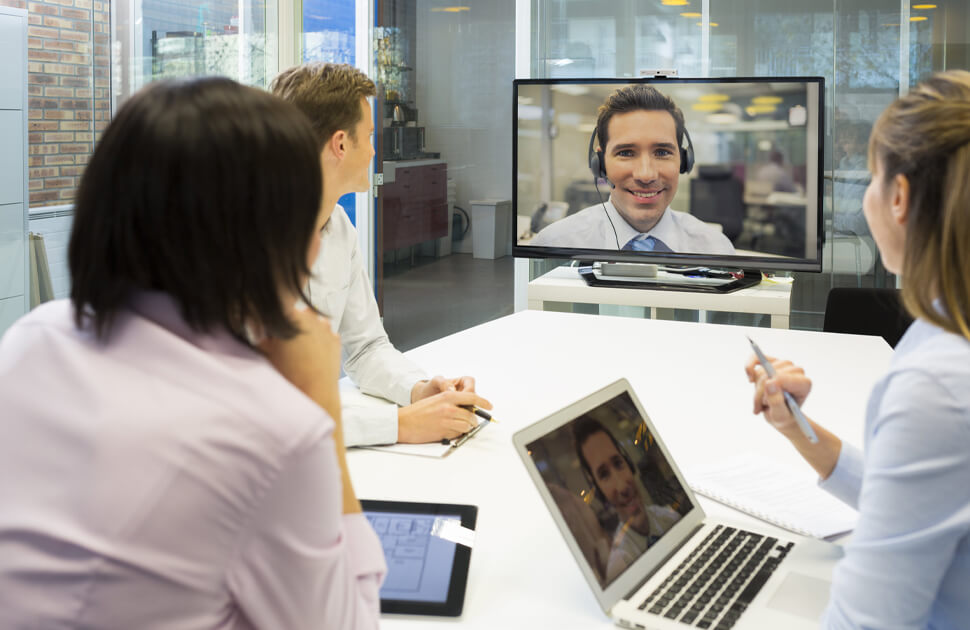The landscape of work has evolved and transformed so often over the last 18 months that expectations, predictions and aspirations for what the office should be have never been more disparate. While that’s not necessarily a bad thing, it does mean that where the office was very much “home from 9am to 5pm”, it has now taken on a whole new identity.
Despite workplaces becoming less crowded by the day due to the rollout of remote work, offices have solidified their value to businesses during the pandemic and the evolution they’ve undergone means it’s an exciting prospect to redefine the way we work and how we use them.
The rise of hybrid working has meant that organizations have changed the way they take up office space, but it remains attractive to large corporations. For this reason, office design will continue to advance and progress.
5 Design Keys That Are Defining Workplaces in 2022
1) Sustainability
Sustainable design begins with the procurement process; it’s not just about the number of recycling bins that are placed in the office. Companies are looking for ways to make workplaces more attractive to staff and therefore more time is being spent on creating sustainable environments that align with Corporate Social Responsibility (CSR) initiatives.
There are many ways to build a workspace with sustainability in mind. By incorporating high-efficiency systems, using LED lighting, harnessing natural light and passive ventilation, using low-emission materials, and reusing or retrofitting furniture, businesses can easily reduce their environmental impact.
This trend will continue to grow in popularity, as it will become a standard that new projects are procured, built and designed sustainably.
2) Technology, Data and Connectivity
Pandemic-accelerated work-from-home and hybrid schemes, technology downsizing and wider connectivity have freed businesses from geographical constraints. As a mix of “borderless” physical and virtual meeting spaces continue to be embraced, organizations are realizing that knowledge work does not necessarily require physical proximity, an especially vital consideration for companies operating with a global workforce distributed or globalized workforce.
Employee reliance on digital tools during the pandemic, whether for collaboration or focused work, is paving the way for even more innovative technologies to be adopted. From emerging solutions to permanent solutions, the next generation of advanced digital platforms such as virtual reality and augmented reality will drive many changes in 2022.
With remote work becoming the norm for so many companies, there is an expectation that data and analytics will provide companies with monitoring and tracking capabilities, as well as insights into user experiences (UX).
3) Neurodiverse Spaces
As companies move toward more inclusive workplaces, there are several considerations that are creeping into offices with greater intent. Neurodiversity is not a new concept in the workplace and has not always been supported by employers, but the tide is turning.
Neurodiversity refers to the differences in our brain functions and different approaches when interpreting information. ADHD, autism, dyspraxia, and dyslexia are examples of neurodiverse conditions.
Office design should provide employees with a sliding scale of spaces, offering them the option to choose the best place to do their work based on their well-being and psychological needs. In the same way that maternity rooms, prayer rooms and yoga spaces are being added to offices, the workplace is now better equipped for neurodiverse workers.
Designing spaces that offer support for different work needs is making offices more inclusive for these workers. This includes quiet work zones, light and sound controlled areas, or thoughtful use of colors or fabrics to help create calming spaces. These design details help make offices more inclusive and help attract and retain talent.
4) Smart Offices
Smart buildings can collect and share data, allowing businesses to better understand when and how different spaces are used.
Remote work has cemented the dependency on digital information. The smart workspace uses digital sensors to monitor and respond to things like occupancy, air quality, and daylight levels. Other technology solutions, such as desk reservation apps, will help maintain a smooth flow of staff, ensuring only one person touches a particular desk each day and eliminating the chance of not being able to properly social distance.
5) Hybrid Work and Flexibility
The rise of hybrid work will dictate what the office looks like through the way it is used. Remote work is expected to continue, so when staff visit the office, they’ll be looking for things they can’t access at home. This will drive the design of the office to allow for greater collaboration and improve the staff experience.
Instead of the grand open plan design of the past; new configurations now need to be able to scale up and down with ease. The office will need to support the emerging needs of hybrid and flexible working for both in-office and remote workers.
To maximize autonomy and flexibility in the workplace, the office must have a broader purpose than before. As we adopt work models that allow staff to work from anywhere, we must consider how best to ensure staff remain engaged and productive throughout the workday.
In 2022, there will continue to be changes in the workplace. This will be influenced by the shift to hybrid working, as well as how staff adjusts to returning to offices on a more regular basis. Although remote work is expected to remain for most companies, the office will be redefined as a destination for socializing and building community. The office is likely to be more easily adaptable and more directly responsive to the needs of the employees.
 Subscribe
Subscribe
 Ask for a demo
Ask for a demo

 4 min
4 min
